Well, it's incredibly beautiful. The archtypical terraced rice paddies are breathtaking. My pictures all fall very, very short of how lovely the landscape really is.

People are friendly and engaging. Honestly, the Balinese may just be the most fun loving people we've met anywhere. You get a little bit of that in the photo of my host father, Ketut. It's also in the face of this chicken vendor, who insisted on a posed shot after photobombing my earlier attempt at getting a picture of his wares.
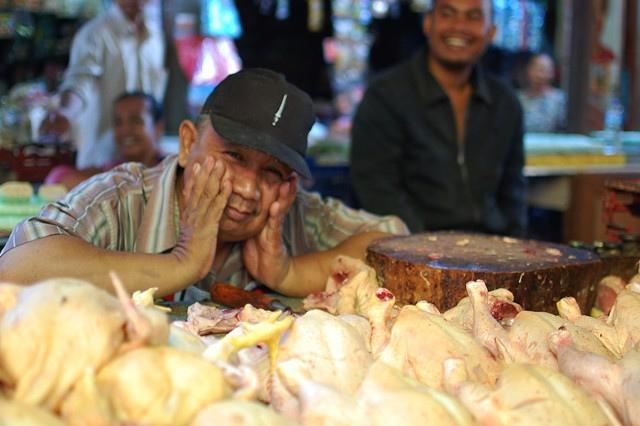
There is a mystic blend of religion in everyday life. Common daily rituals are imbued with ceremony. There are shrines and temples in every direction you look, and in all sizes. Every home, business, and group of rice paddies has a shrine placed at the 'kaja' corner (the one that's closest to the big volcano, Guning Agung). Every village has three temples, because different kinds of rituals and offerings are dedicated at different kinds of temples.
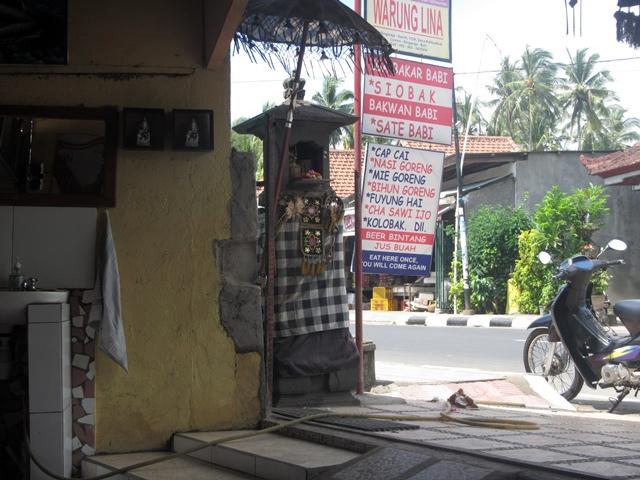 Kaja-placed shrine at one of our favorite warungs
Kaja-placed shrine at one of our favorite warungs
 Sacred places, like this banyan tree, often have a formal shrine
Sacred places, like this banyan tree, often have a formal shrine
Some of these are given a surprisingly large footprint. At least 20% of the community rice-drying pavilion- where grains are dried before hulling- is dedicated to a temple. This decision was probably not made by an MBA, but the Balinese wouldn't have it any other way. The homestay where we stayed for our two night sin Ubud dedicated a similar (and typical) proportion of space in their family compound, space you might easily say could be used for another room to host tourists instead. Never going to happen.
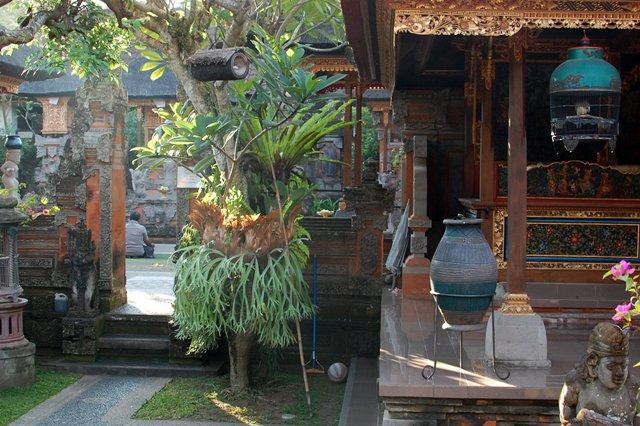 Morning devotion inside the family temple at Artini I in Ubud
Morning devotion inside the family temple at Artini I in Ubud
Of course, you don't need a temple or a shrine to make an offering. Offerings, too, are everywhere. In front of shops, at traffic intersections, on the wind shields of cars, on the desks of offices. There are many types and materials, but they range from the very basic (a square of banana leaf with a smidge of cooked rice) to the more involved (a dish folded from palm fronds with flower petals, a coin, an incense stick- maybe even a little Ritz cracker) to the fantastically elaborate.
Walk around early in the morning, and you'll see women (because it is almost always women) in selendangs (sashes) walking around with trays of offerings to place at key locations: at entrances, in the kaja corner, at intersections (junctures where good and evil may meet), at a place where they'll be working.
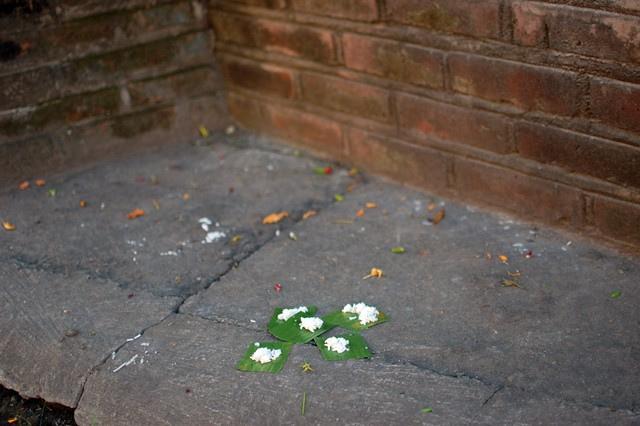 Simpler offerings on the ground are for demons. You will step on them. It's OK, just don't try to.
Simpler offerings on the ground are for demons. You will step on them. It's OK, just don't try to.
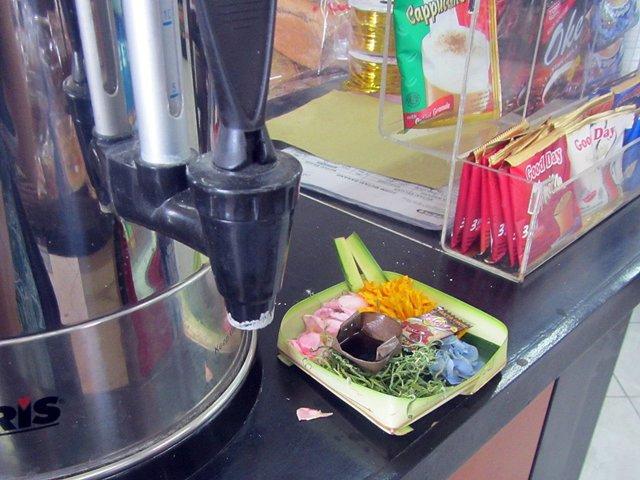 More elaborate offerings higher up for gods. I love how the offering at the bakery counter at an upscale Ubud grocery includes a wee cup of coffee
More elaborate offerings higher up for gods. I love how the offering at the bakery counter at an upscale Ubud grocery includes a wee cup of coffee
 In the temple, offerings must be carried on heads- the most sacred part of your body
In the temple, offerings must be carried on heads- the most sacred part of your body
 They go to work, too. The guy I buy pork from at the Lovina market has one in his stall...yes, that's the kaja corner
They go to work, too. The guy I buy pork from at the Lovina market has one in his stall...yes, that's the kaja corner
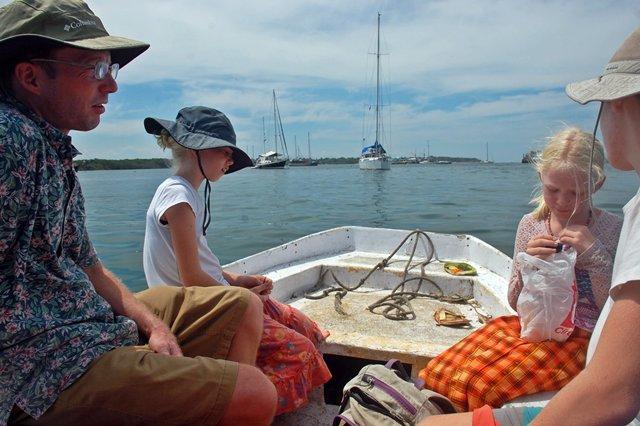 See the front of our water taxi to Totem? Yep. Offerings.
See the front of our water taxi to Totem? Yep. Offerings.
Art and culture are woven into the fabric everyday life. Each full moon, the Barong is performed at a temple near our Serangan mooring.
 Full moon Barong at the Pura Dalem
Full moon Barong at the Pura Dalem
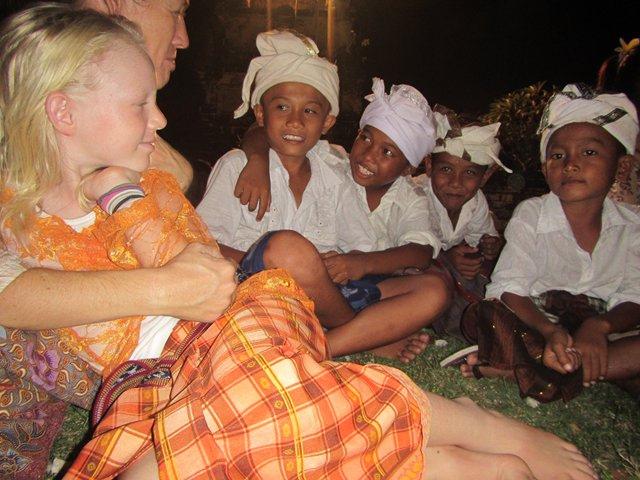 meeting Serangan neighbors at the Barong performance
meeting Serangan neighbors at the Barong performance
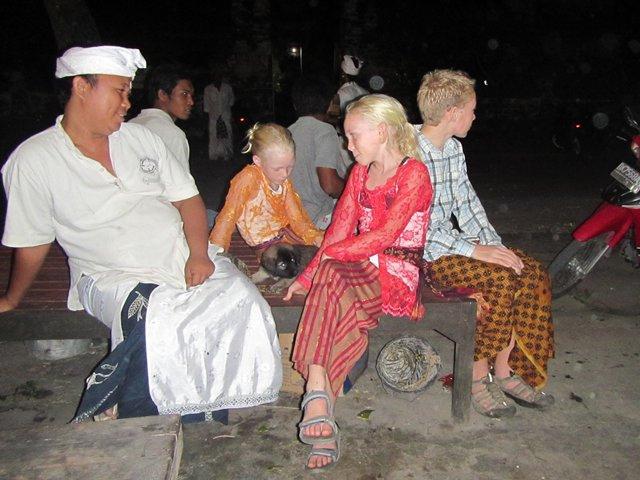 just outside the temple, snacks and conversation
just outside the temple, snacks and conversation
Because it's purnama- the full moon, an auspicious time- another temple (about 100 yards from the temple where we watched the Barong...they really are everywhere) also has a ceremony going on. Dancing again! Somehow we didn't feel the need to pay to see one of these just-for-tourists dances in Ubud after having the chance to attend these performances.
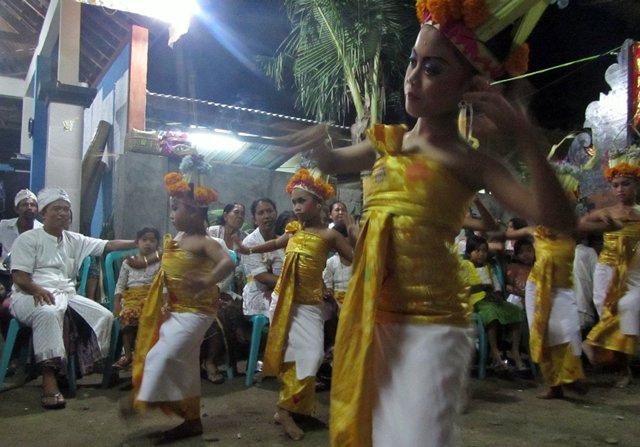 I can't remember the name for this one...all dancers here were pre-pubescent girls
I can't remember the name for this one...all dancers here were pre-pubescent girls
Friendly. Beautiful. Culture blending into art blending into the patterns of everyday life. What's not to love?
Going to Bali? If you have time, the best (best!) primer on Balinese culture is a two-book set by Fred Eiseman. This was the backbone of much cultural education in the college semester program I attended here in (gulp) 1991. If that's not an option available to you, the website for Murni's (hotel, restaurant in Ubud) has a really good set of articles that cover the basics...and then some.

